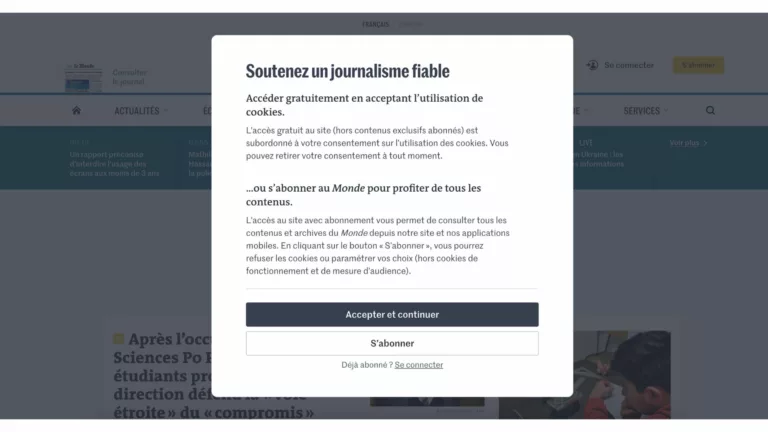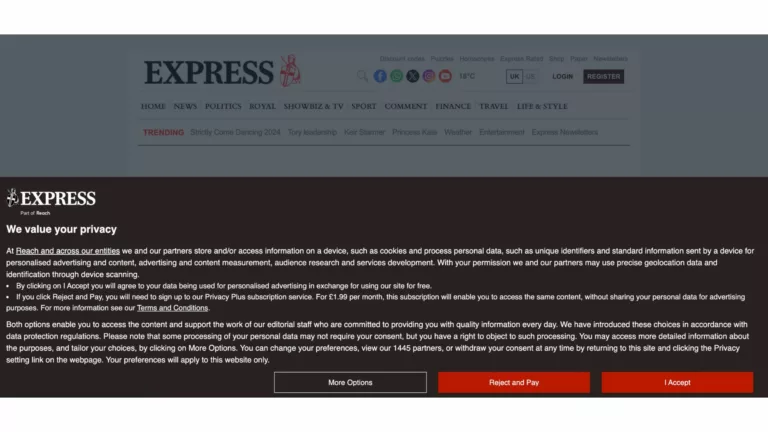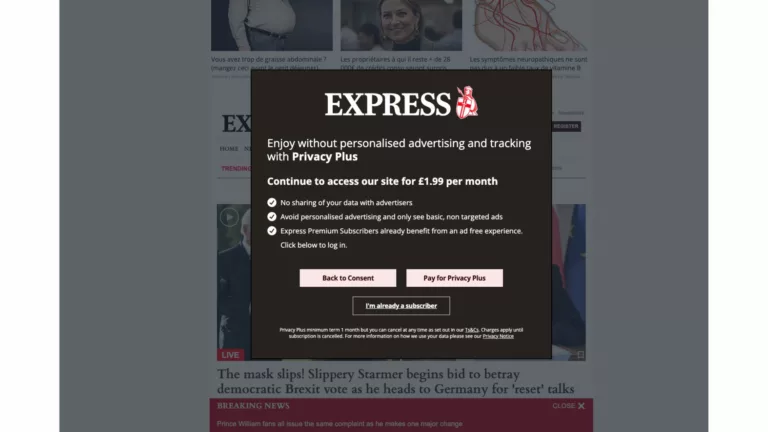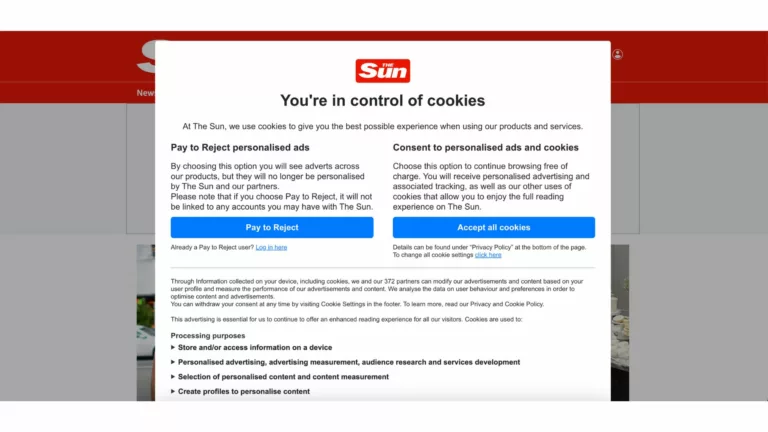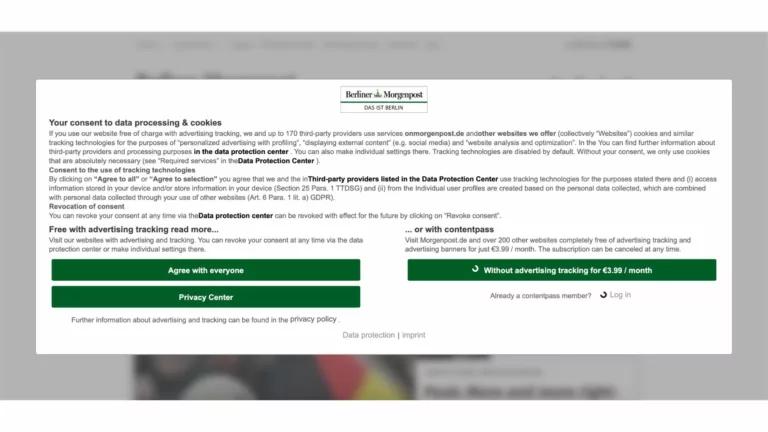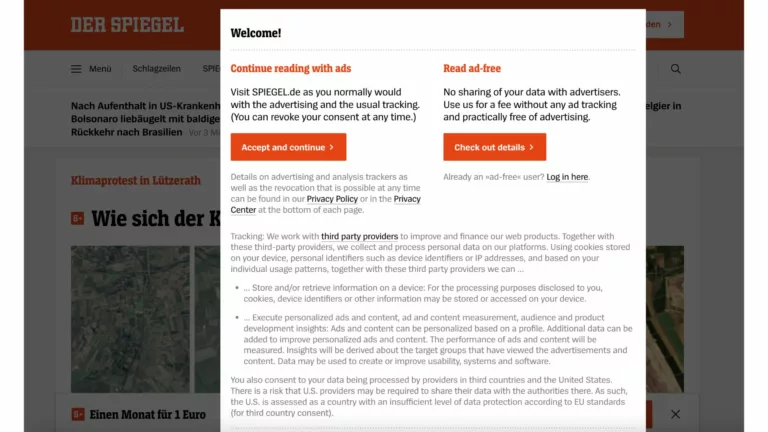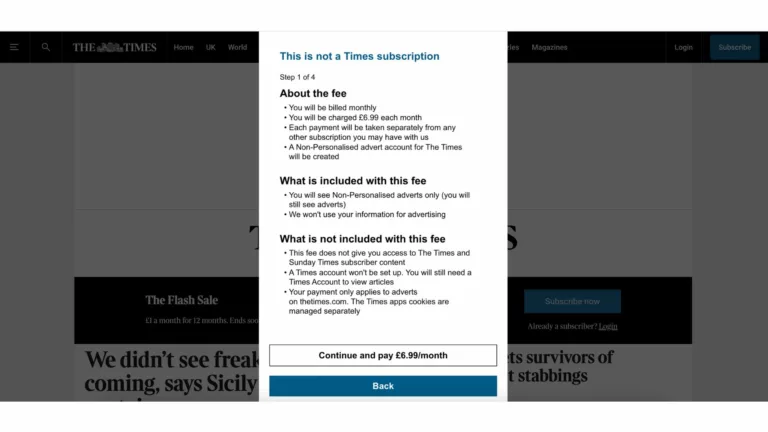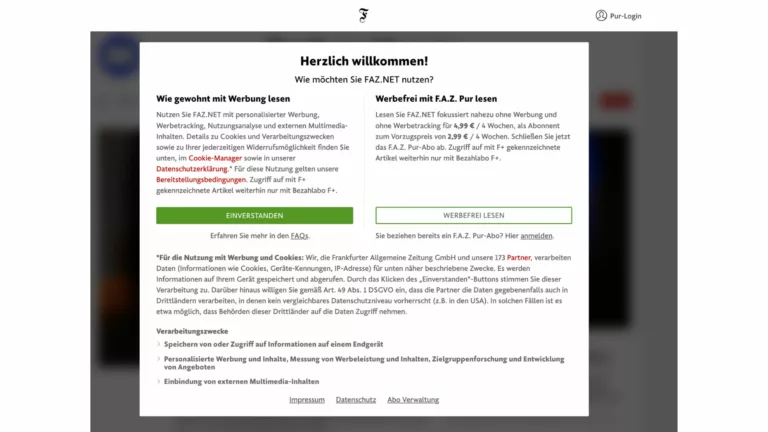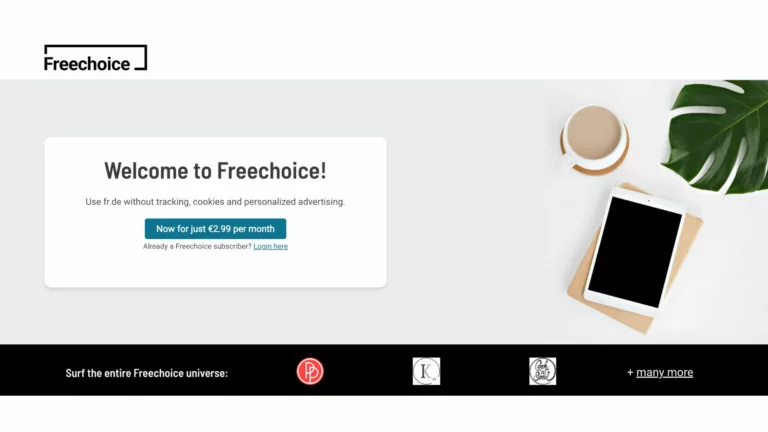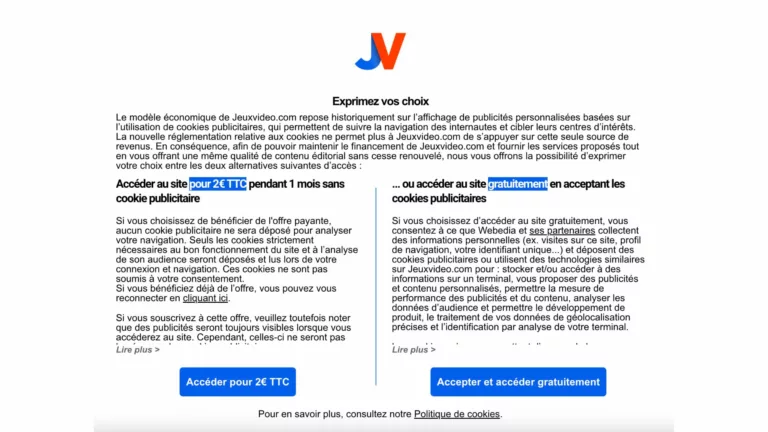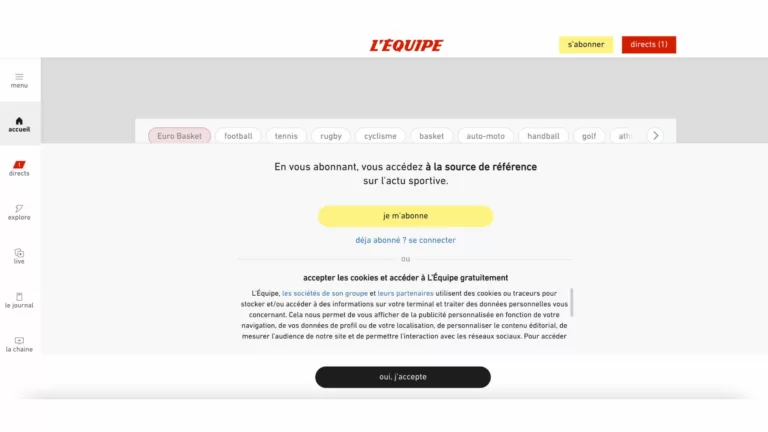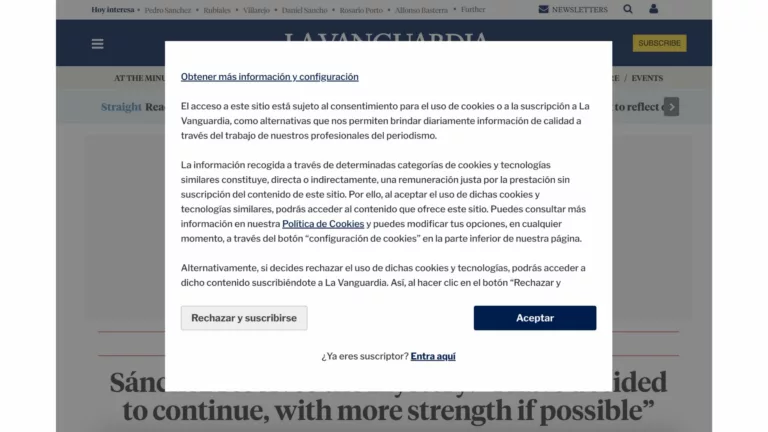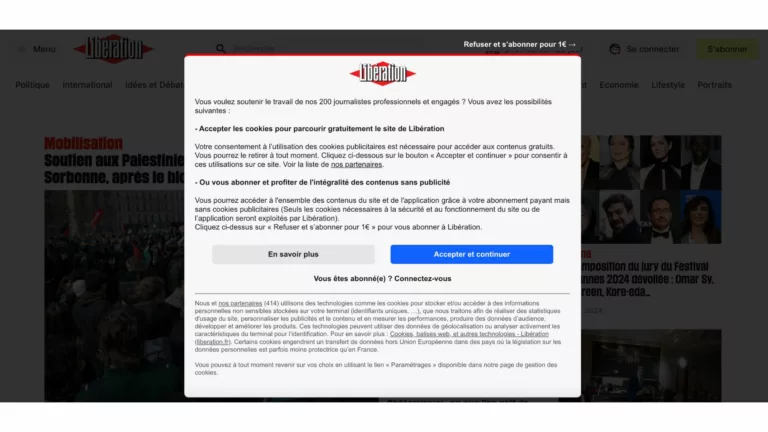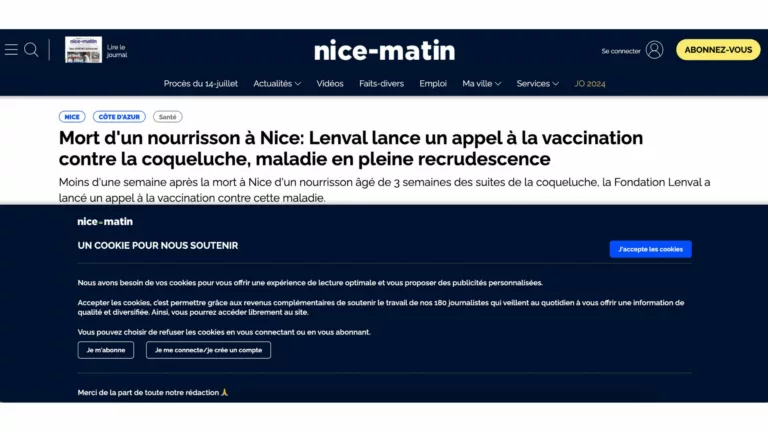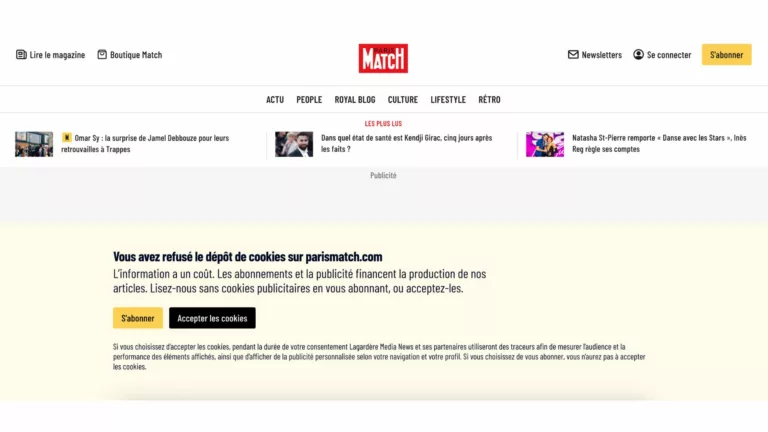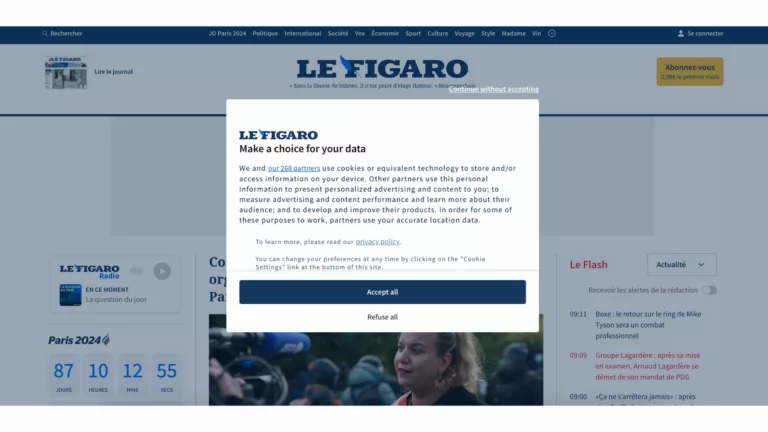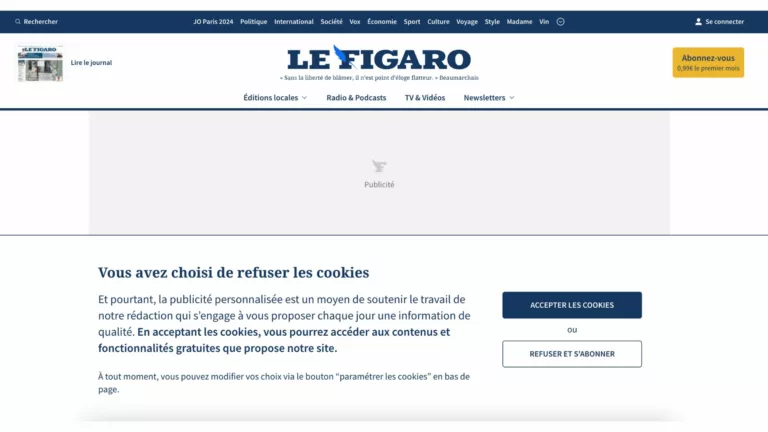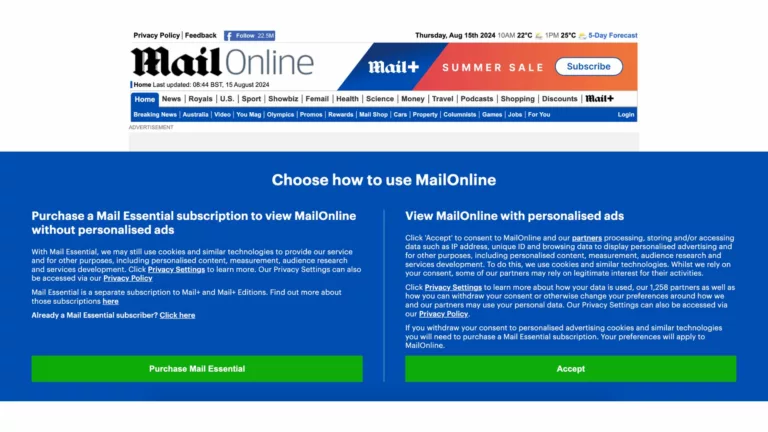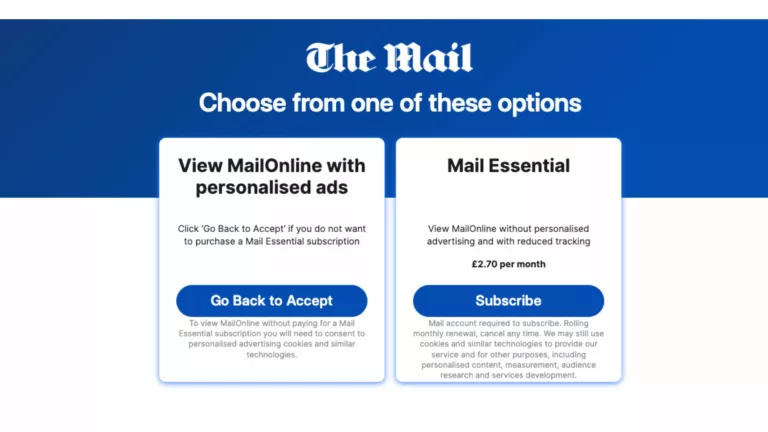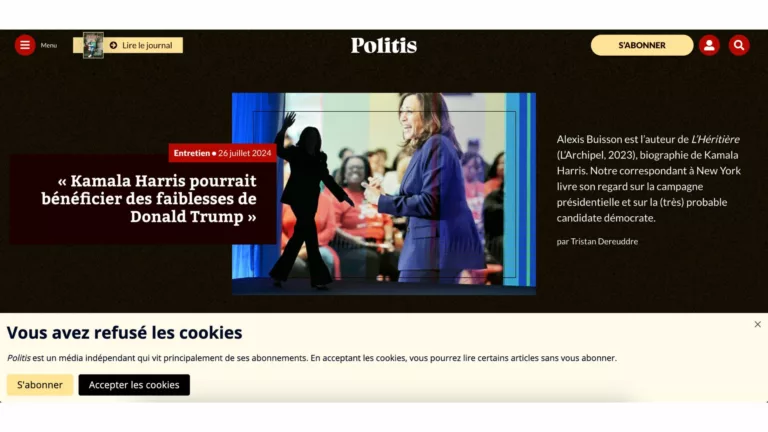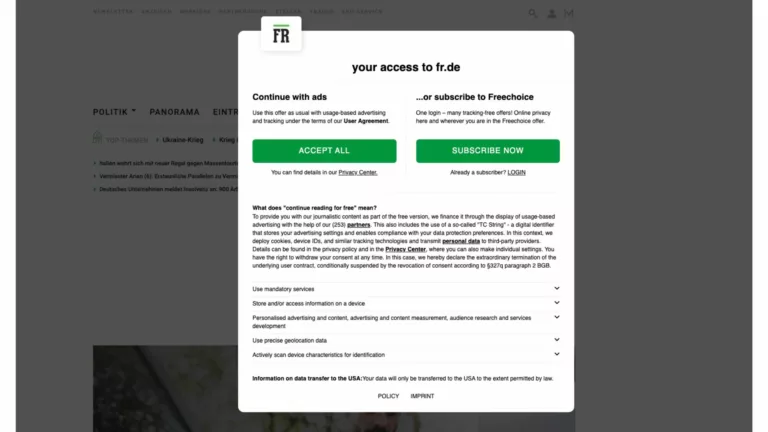

Cookies are a pretty hot topic at the moment, and with companies being faced with constantly changing, ever tightening restrictions that differ around the world, it’s hard to keep up.
On the one hand, it’s great to see readers having more control over the use of their data.
However, consent is essential to many publishers’ monetization strategy, particularly those who employ cookies for data collection and advertising revenue. These tightening cookie regulations are therefore creating a significant hurdle for publishers, especially the legislations that make declining consent even easier than ever.
For instance, one of the first countries to make a move in this direction was France where, in Spring 2021, the national data protection agency, the CNIL (National Commission on Informatics and Liberty), declared that it should be as easy to decline cookies as it is to accept them.
Specifically, the “Decline” consent button on the cookie banner (the thing you see when you first arrive on a website) should be on the same level as the “Accept” option.
A similar kind of regulation has been introduced in Germany (organizations must “present users with equal choices for giving or rejecting consent, otherwise it will be deemed invalid.”) and more recently in Spain (“the option of refusing cookies must be offered to the user at the same time, at the same level, with the same visibility as the option to accept them, and the mechanism used (button or other) must be similar, without sending them to another layer or to another location to carry out this action.”). The UK, and likely others, are set to follow suit…
The rise of the cookie wall
As a way of combating the falling consent rates that have naturally come with these kind of regulations, publishers have been implementing “Cookie Walls”.
We talked about this back in 2021, back when the phrase was barely used. But since then, the need to reignite consent rates has become significantly greater.
What is a cookie wall?
Like all “walls”, a cookie wall asks for a value exchange, offering a reader two options:
- Accept cookies and continue to browse the website as normal
- Reject cookies but support the publisher in another way, such as by subscribing (the most popular option) or paying a one-time fee
What are the laws around cookie walls?
The initial reaction to this concept is often “Is that legal?!”
The answer is yes, cookie walls are legal as long as they provide an alternative means of accessing your content that doesn’t require accepting cookies. In short, consent shouldn’t be coerced by restricting access to services/products.
The consent-free alternative that you offer doesn’t necessarily need to be free. Subscription or a one-time payment to access content without cookies is often the chosen alternative.
In France, in 2022, the CNIL updated guidelines on cookie walls, essentially stating that the legality of this content monetization model should be taken case by case, with a few things to remember:
- The user should be presented with a fair alternative for accessing the content if they refuse to accept cookies
- If the alternative is to pay, the price should be reasonable
- The publisher must demonstrate that the cookie wall is limited to purposes that allow fair remuneration of the service offered
But it’s always worth checking the legislations in the country concerned.
Cookie wall benchmarks from European publishers
Examples below show cookie walls from French, German and Spanish publishers. Where available, Google’s automatic translation was used (which isn’t always 100% accurate…), but sometimes this doesn’t work on the overlay (only on the site’s content itself) so the wall screenshot isn’t in English.
There are 3 main types of cookie walls included here:
- The cookie wall is integrated into the consent banner presented upon arriving on the website (e.g. Der Spiegel)
- Those where we decline cookies on the consent banner, and are let through to the homepage, but are blocked at the article level like a traditional paywall or registration wall (e.g. Paris Match)
- For some, after choosing to “Decline” cookies and instead clicking on the “Subscribe” alternative, we’re led to a specific subscription offers landing page (La Vanguardia for instance) or a partner company which gives consent-free access to a variety of websites for a set fee (Frankfurter Rundschau has partnered with Freechoice to offer “use of fr.de without tracking, cookies and personalized advertising for just €2.99 per month”).
The metric to track cookie wall performance
For the most part, publishers don’t aim to convert readers into subscribers at the point of the cookie wall. IN fact, the paid offer with no personalized ads is primarily there to convince readers to accept cookies.
The main metric to track in this case is consented page views.
What technology do you need in order to implement a cookie wall?
Unsurprisingly, you first need a Consent Management Platform (CMP) to present the traditional cookie banner. Some providers include:
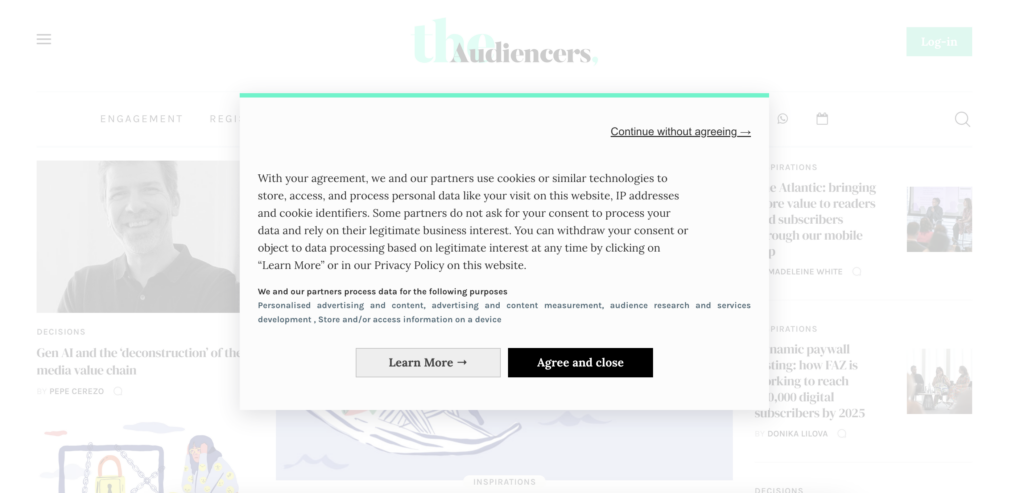
You then need the cookie wall that is presented to readers who click “decline” or “Continue without accepting”. Many of the publishers shown in the benchmark above work with Poool to implement this, building the wall just like any other conversion step (paywall, registration wall, etc.) so that it becomes part of the journey towards higher ARPU.
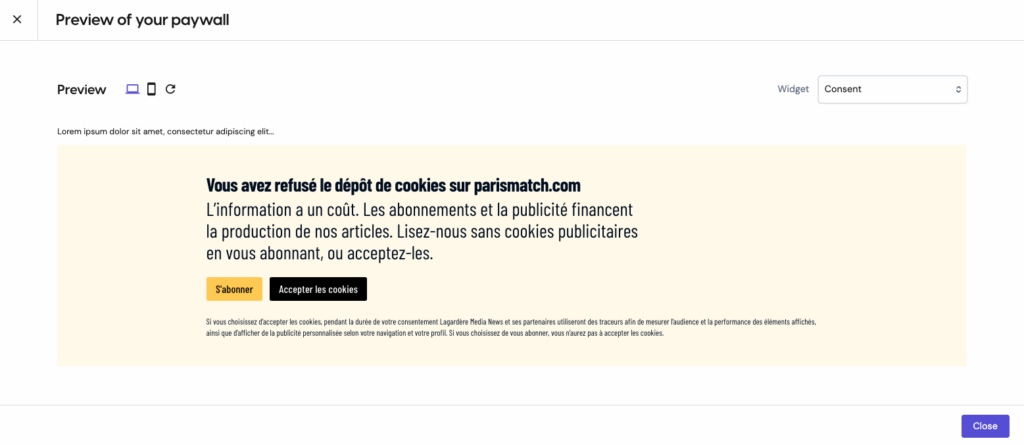
More than just a cookie wall: what else should you be thinking about?
Whilst getting consent is essential for your revenue model, it’s also your first interaction with a reader and a valuable moment to start building trust. By being transparent and communicating why you use cookies and what you do with them, you can help readers feel fully in control of their privacy whilst also informing them on how important they are to your model.
Because, let’s be honest, the average reader doesn’t know much about cookies, and their media coverage doesn’t tend to be very positive. They can, however, greatly improve the user experience as well as indirectly benefit publishers without a reader having to pay a penny. So, let’s tell users!
The Guardian’s consent banner is a great example of how we can inform visitors about the value of cookies (for both us and them) whilst also ensuring they feel in control.
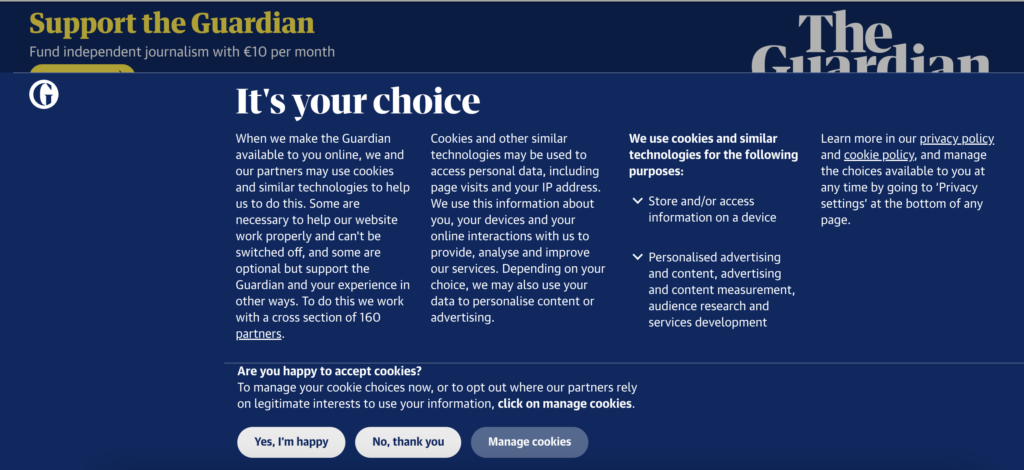
> To read next: European Cookie walls: changes and strategies you need to know

